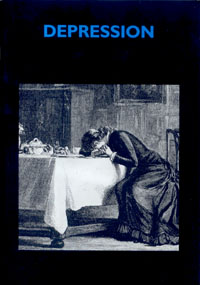Unlocking the Value of Combination Therapies

Depression has been defined as the persistent and sustained feeling that the self is worthless, the world meaningless and the future hopeless. There is a world of difference between being generally miserable and sad, and suffering from the psychiatric illness known as depression.…
Depression has been defined as the persistent and sustained feeling that the self is worthless, the world meaningless and the future hopeless. There is a world of difference between being generally miserable and sad, and suffering from the psychiatric illness known as depression. Nevertheless, a continuum can be seen to exist going from normal human sadness through neurotic misery to psychotic delusions. This paper deals with the latter two categories rather than the universal experience of ‘feeling depressed’. It has been suggested that clinical depression is the most common emotional disorder, for example, afflicting approximately 50 per cent of North Americans and Western Europeans at one time or another – although the basis for such assertions may derive entirely from their vagueness; any attempts at defining concepts may lead to considerable difficulties. The US National Institute of Mental Health has estimated that 15 per cent of those aged 18 to 74 may be suffering from serious depressive illness in any given year (Gallant and Simpson, 1976). Approximately 4,000 suicides are recorded each year in the UK; depression is responsible for at least 70 per cent of these deaths (Wilkinson, 1989).
There is now perhaps a more sympathetic attitude towards victims of depression with it being viewed as a serious illness rather than something one can just ‘snap out of’ at will. However, sufferers may still fear being taken for malingerers and feel they are to blame for their condition. The shame they may experience adds to the depression. These factors may help to explain why depression is under-treated, under-recognised and stigmatized. It has been suggested that only one in four cases of depression is actually recognised and treated.
Recently, there has been considerable development in the medication available to treat depressive patients. It is claimed that many of the newer treatments offer good efficacy and fewer side-effects than the well-established tricyclic antidepressants which are still frequently prescribed in cases of depression. At least the depression sufferer in the 1990s has the prospect of drug treatment which may lift their depression. In the pre-World War Two era such patients were simply sedated, nursed and supervised; the post-War period saw the emergence of electro-convulsive therapy (ECT) which transformed the outlook for depressed patients. ECT remained the main treatment for depression until the late 1950s when anti- depressant drugs first became available. Currently research is examining ways to create more selective antidepressants (so that they act more specifically on lifting the depression and do not affect other functions) with fewer side-effects and interactions with diet and other drugs.
Since depression is such a common and potentially fatal illness, this paper attempts to set out the background to the illness and its social and economic consequences.
Depression
West, R.
(1992) Depression. OHE Series on Health. Available from https://www.ohe.org/publications/depression/